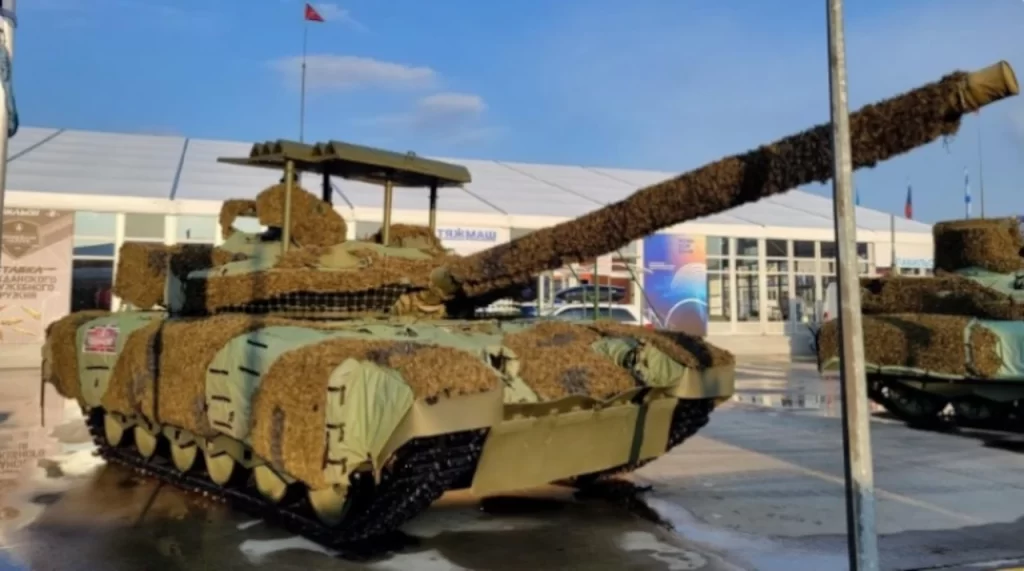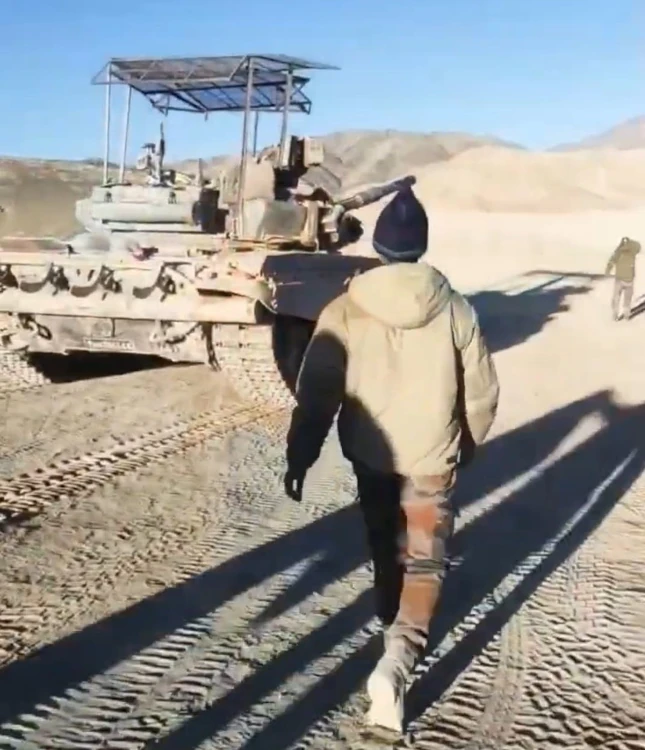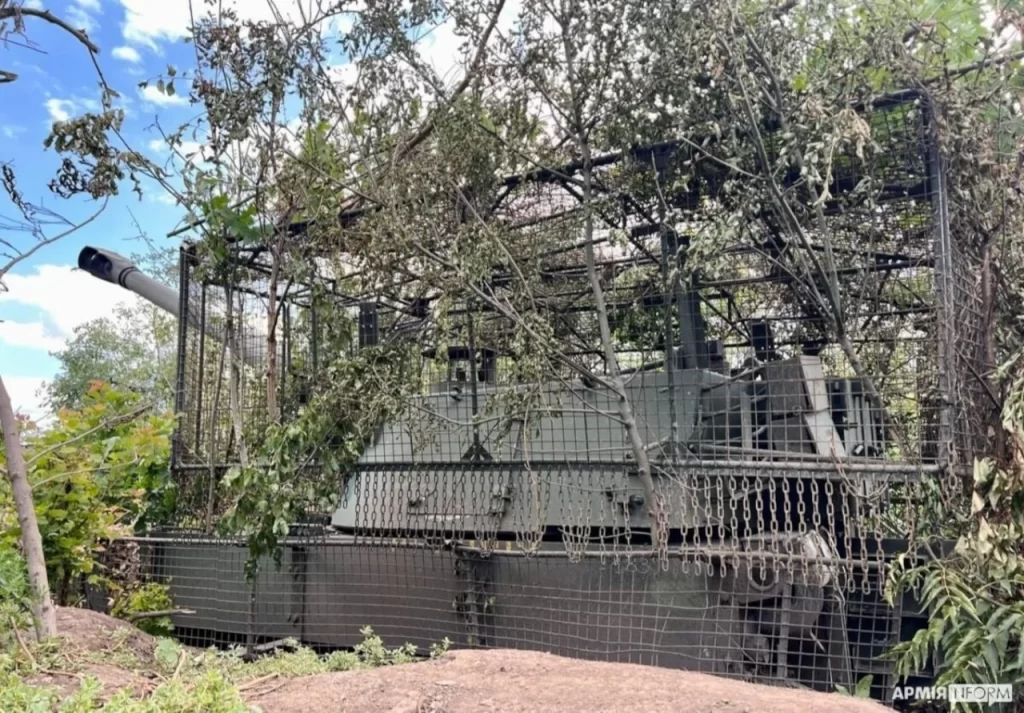Overhead metal screens, often known as “frames,” are a signature feature of Russian military hardware used in the conflict with Ukraine and are now widely used elsewhere.
Recent photographs show what appears to be anti-drone cage technology being installed on Israeli Merkava 4 main battle tanks (MBT), possibly to prevent Hamas from using commercial drones for bombing strikes. These defensive structures were likely created to protect against low-flying drones that pose a risk through monitoring, targeting, or direct attacks.

Even though current main battle tanks are meant to be powerful and perform well, they have specific weaknesses that make them susceptible to the ever-evolving threats on the battlefield. Using drones, particularly ones carrying explosive payloads presents one of the most obvious challenges. The front and side armour of most main battle tanks are typically thicker than the top armour of those tanks. Because of how they were built, they were especially vulnerable to attacks from above. Drones can hover in place and launch attacks from a great height. They can take advantage of this vulnerability by dropping explosives directly onto the top surface of the tank.
The structure that resembled a cage was seen for the first time on Russian weaponry not long before the full-scale invasion of Ukraine in late 2021. It was demonstrated at the Russian Defence expo ‘Army-2023’ that specialised solutions (or efforts at solutions) to various dangers to armour, which continue to grow as the war continues, are now becoming a more standard addition for armoured vehicles. This trend is expected to continue. They are also something Russia is trying to offer foreign customers who are keeping a close eye on the events in the conflict in Ukraine.

The T-72, T-80, and T-90 series all have screens resembling cages and are mounted on multiple tubular supports affixed to the turrets of their respective tanks. The top of the enclosure features a combination of a metal mesh (which ostensibly covers the tank hatches when they are open) and a corrugated metal “roof.” It is unclear what the reasoning was behind the design of the parallel ridges and grooves; nevertheless, it is possible that it was discovered that this shape is more efficient at deflecting mortars that were dropped by drones or First Person View (FPV) kamikaze drones.
These hoods have several disadvantages; one is that they make it more challenging for the crew to evacuate the tank in an emergency.
Various other configurations are possible, including this tank hull cladding. Some other designs feature more support tubes and a more extensive corrugated metal framework. It is also possible to cover the “walls” of the cage with hanging mesh to provide additional defence against attacks from the turret. The mesh between the turret and the ship’s hull protects this potentially susceptible section. Drones cannot penetrate this area.

The Western Command of India’s military currently uses turret-caged T-90S tanks in their operations. India has purchased thousands of Russian T-90 tanks. These tanks come from Russia. On various social media sites, photographs of T-90S tanks, which are also referred to as “Bhishma” tanks, that have welded canopies placed above their turrets have been published. These tanks are part of the Western Command, responsible for the border with Pakistan.
During a modern battle, it is quite improbable that someone can legitimately expect to receive such protection. Only by building a comprehensive, integrated, and layered system of air defence, electronic warfare, and many types of combat support can full-fledged protection against UAVs be achieved. Despite being armed with the most advanced Trophy Active Protection System (APS), the Merkava 4 could not neutralise Hamas drone-dropped bombs and antique Soviet anti-tank missiles. In videos, two Merkava 4s are destroyed, one by a single ATMG and the other by a single bomb dropped from a drone.

Even the Ukrainian Armed Forces have begun to build cages to protect Western equipment from Russian Lancets, albeit initially mocking them and referring to them as coop cages. A photograph of an M109 family self-propelled howitzer with such a massive construction was shared on social media. The calibre of the howitzer was 155 millimetres. However, the text for the photo suggests that the effectiveness of such defence against aerial strikes, particularly in terms of crew convenience, is disputed. The illustration shows a self-propelled cannon surrounded by a metal frame of bars and chains. The only part of the gun visible outside the container is the barrel. Furthermore, the structure looks to be used to secure branches for camouflage.
It appears that drone cages will play a role in future military conflicts ands the employment of drones themselves.
